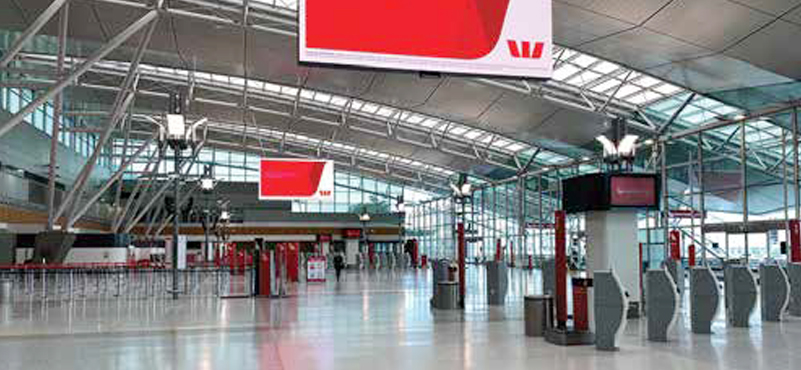Keeping in mind the various and lasting issues that have been plaguing Air India, Navin Berry, Executive Director, BITB, spoke to some of the key stock holders in the industry and discussed the concept, as well as the relevance, of a national carrier. This retrospection by senior leaders provided some interesting insights. Excerpts:

Berry: Suresh, are your international operations profitable in India?
Suresh Nair: Normally we would not operate a flight without at least breaking even.
Berry: There was a recent report that SpiceJet is planning a low-cost operation to London with a Dreamliner and will be charging rupees twenty-five thousand return fare. Any comments?
Nair: See, we are the pioneers in low-cost long-haul operations with AirAsia X. So far, we have really expanded and now a few of these low-cost long-haul carriers have come up. I think we really need to wait and see how it works.
Berry: Will, we have an Asian low-cost carrier. We have one from the middle east, from Singapore but we have no low-cost carrier coming from the European side yet. Do you see any advent of low-cost from Europe coming in to India or our region?
Will: Well, the European low-cost airlines do not have long haul equipment. So, they are really focussed on the continental routes, business and traffic, which there is a lot of. There is still a lot which they can cover. I do not think that this is on the European low-cost airlines’ agenda at the moment. Do not forget that even low-cost in Europe is still quite high cost when you compare it to the cost levels when you are operating out of Asia. South-East Asia, specially, has been very active and dynamic in the low-cost segment because you have here in these countries a very good cost level which Europeans cannot match. In the near future, I do not see any European activities in this particular segment.
Berry: Singapore Airlines and Lufthansa, you are bringing multi-products in to India. You are both bringing in four airlines. How do you have a policy between four different airlines coming to India?
Lim: I think for Singapore Airlines group, we are very clear. We have the low-cost carrier as well as full service carriers. So, we provide different price points for our customers. It is for the customer to choose.
Will: The Lufthansa group is a little different. For us it is all full-service carriers in the premium segment. It is the portfolio that makes sense for us because it is not that we are operating to one hub only or from one gateway out of India. We are operating from five gateways to five hubs which is really something unique. This gives our customers a broad range of opportunities to combine, to really use all the services and also, because we have defined very well the different brands with different products and characteristics. The point is also to give a choice to the customer and enable their decision making in whatever they expect from an airline. All the airlines have different ways of how to be perceived in their services.
Berry: Is going to smaller, new niche destinations the answer for the future? Will the concentration in the metros reduce in the years to come?
Will: I think it is going to be additional. The metros are going to be there and there will not be a shift as such but additional business will also go to secondary places. Today, you have more modern aircrafts with better profitability and productivity which has made these destinations really viable. I have seen in the recent years that there is a shift in the business away from looking only at the hubs. There is more point to point travel now.
Goyal: In secondary cities, there is no restriction on bilaterals. The government is very open to any airline operating to secondary cities or any of the new airports. Even if it is not a part of the bilaterals, they are available very easily.
Berry: Harvinder, any comments? United just has fourteen flights and is doing very well. What next from United?
Singh: Honestly, as an airline we keep looking at this market. We look at additional destinations, we also look at adding capacity with a different aircraft. That is something that we are constantly looking at. Our synergies with our JB partners and on a larger level with Star Alliance is what we are planning to intensify a little bit more in terms of offering services and making it more viable for the Indian audience.
Berry: How relevant is the concept of a national carrier today? Just your personal opinions.
Singh: Personally, I think it is important to have a national carrier. In a lot of ways, it does reflect the strength of a country, it reflects the countries commitment to aviation. It is very important to have a national carrier which is doing well.
Lim: When we started in 1972, we were told that we will either swim or sink because we were to be on our own. We were also told by our then Prime Minister, Lee Kuan Yew that Singapore can afford not to have a national airline. The Singapore interest was more than the national airline. So, for us, every year we slog to make sure we survive and continue to make profit so that we may continue to be the national carrier.
Will: I would say that Lufthansa is not the national carrier of Germany. It is the largest carrier in Germany and we have gone in a way where we are creating a multi-national carrier with the Lufthansa group. We do not consider Germany as our home market but more what is the Central Europe. That is why in the system we have a Swiss airline, a Brussel airline etc. It is a wider concept and I think in Europe, the concept is going away from national airline because our customer base is different than what it was fifty years ago.
Goyal: I have always advocated that India is more important than Air India and so is India more important than the Indian flag but the Indian flag is equally important. And I think to have a national carrier for India is very important. The first CEO of Singapore Airline was ex-Air India. The main people who built Emirates were from Air India as well. It is unfortunate that Air India has been through a bad patch but now with the turnaround that Air India is making and with the current transparent approach you know two things. I am confident that if the past debts of the airline are absorbed, Air India can become an airline that every Indian can be proud of. I believe that India should have a national carrier but at the same time it should be answerable to shareholders and not members of parliament or government bureaucrats. There has to be a change in the ownership of Air India and there has to be a private investment in the airline.
Taki: ANA is a purely private company. We started our operations sixty-five years ago with just two helicopters. Now, we have become the biggest airline with our own efforts. I do not think I am in the right position to answer that question but for sure Air India is a very important carrier as we are members of the Star Alliance.
Nair: It is just a combination of factors, maybe too much of government interference, if you ask me, which has really brought down Air India. I think the concept is extremely relevant and we could have really taken the market. A lot of the international airlines that you see doing well these days are doing well because of Indian passengers.
Kumar: A national carrier, be it United, Lufthansa, ANA or anyone is an airline which the people of that land can relate to. For example, Lufthansa may not be the official national carrier of Germany but as soon as you mention Lufthansa, people think of Germany. That is what is a national airline. Air India has had this status since 1953, we can say. What is important is that this carrier which has gone through a very lean patch should come back to the helm of this position. Whatever is required to be done to keep it healthy is to be done by the people who own this airline. You need to have one airline with which the people of the country associate.



































